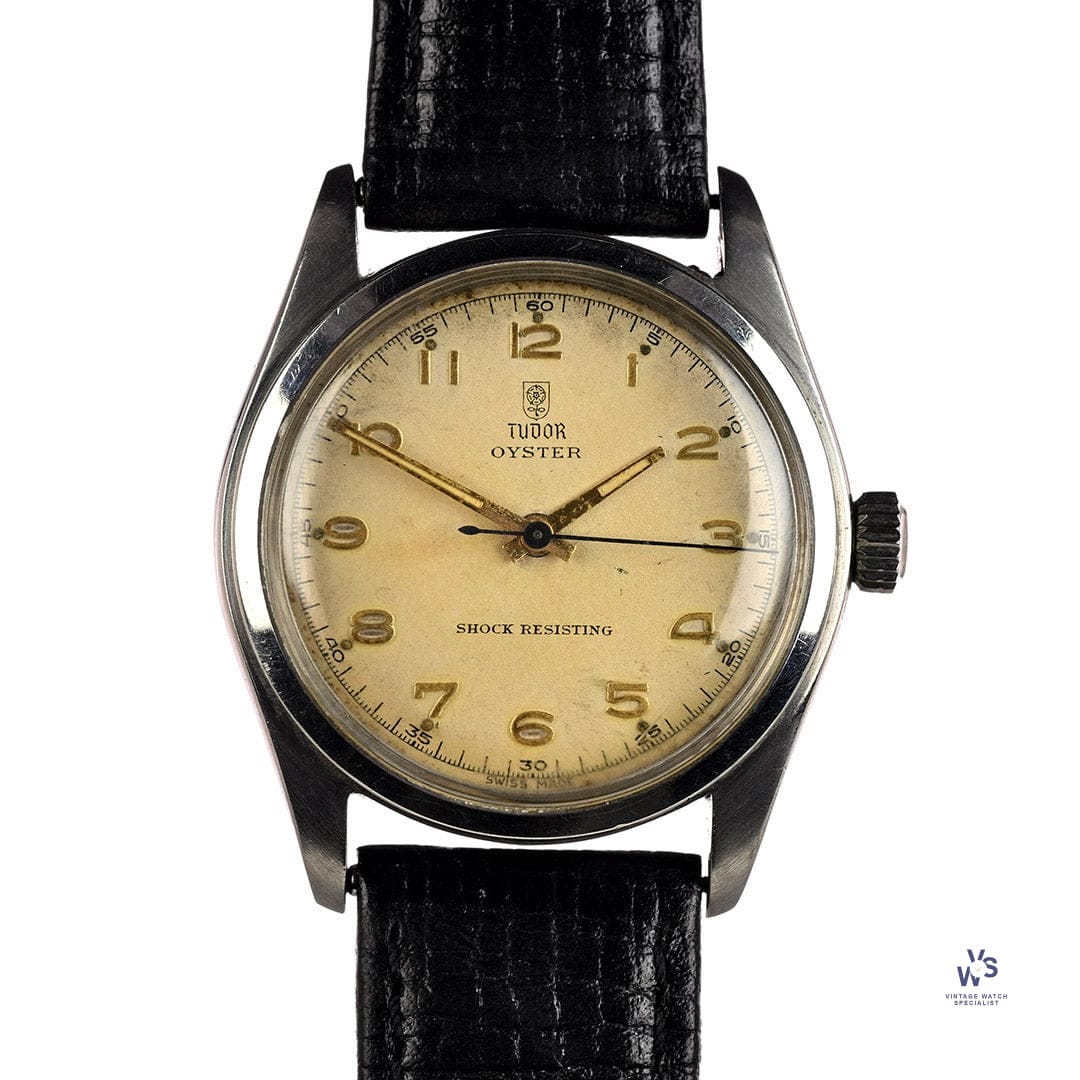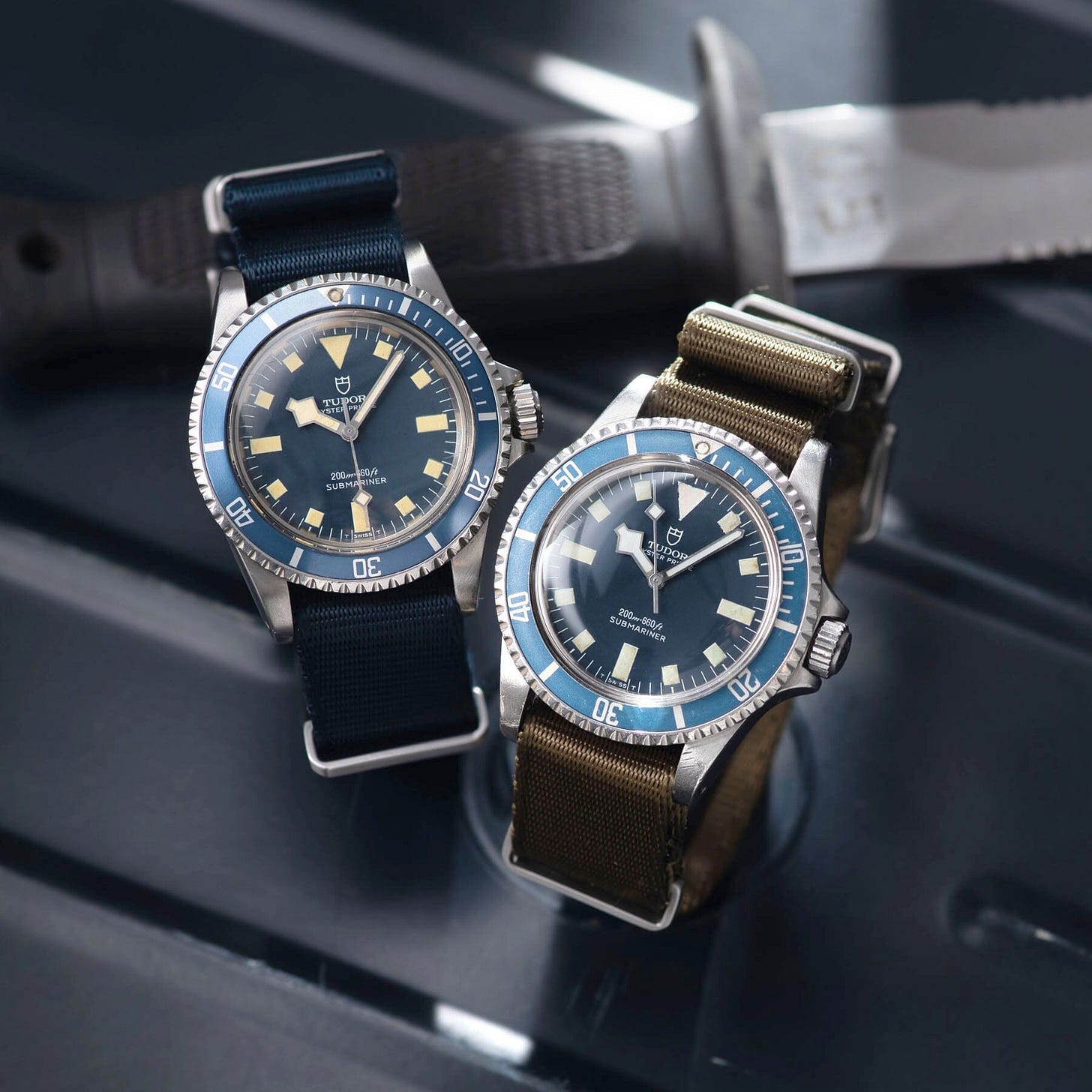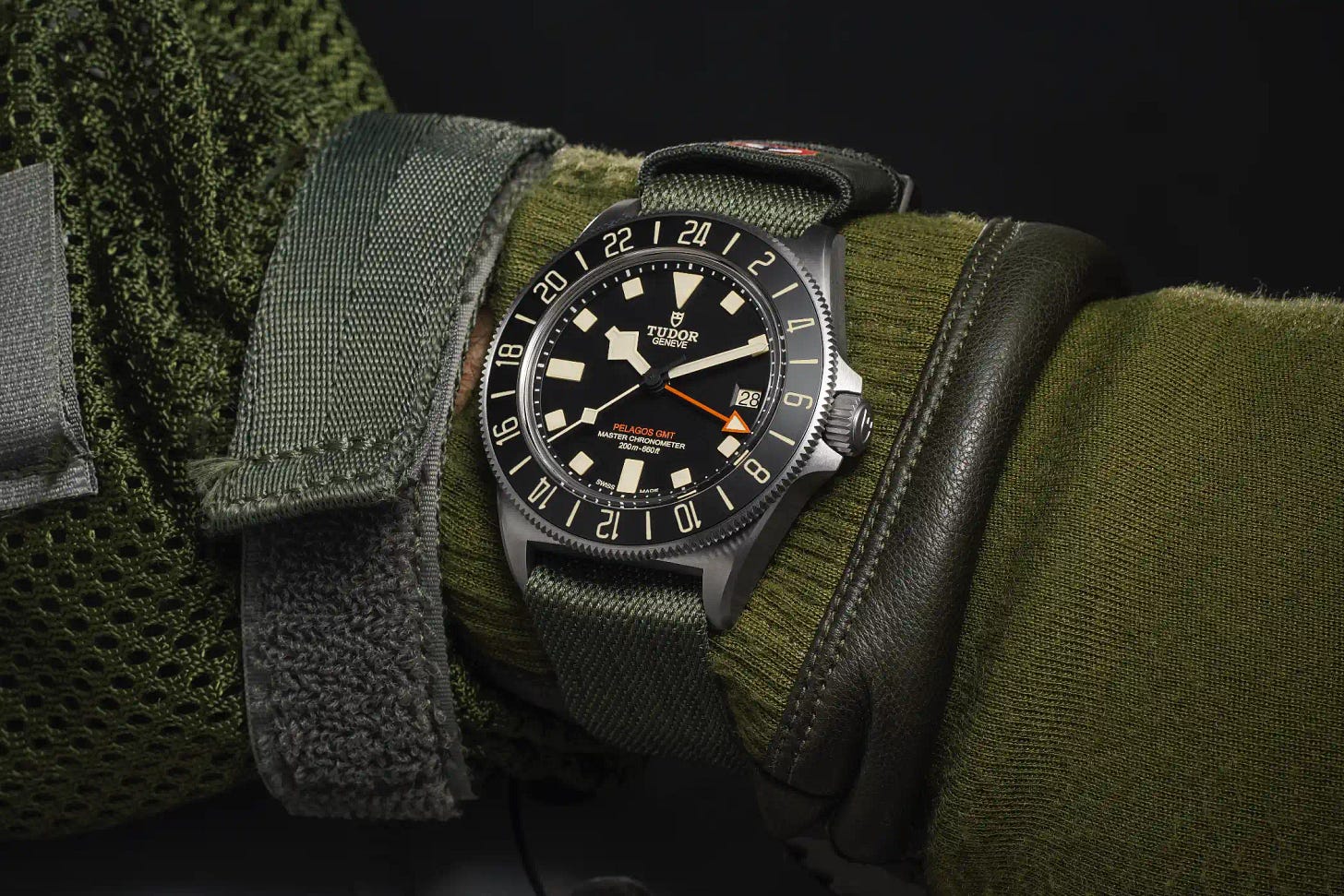How Rolex’s Little Brother Became a Legend
Forged in Rolex’s shadow, tested by war, and reborn through innovation — this is the story of how Tudor became the people’s luxury watch.
When most people hear “Tudor,” they think of royalty. But in the watch world, Tudor has carved out its own throne — built on steel, sweat, and serious style.
And yet, this wasn’t always the case. For decades, Tudor was dismissed as “the Rolex for those who couldn’t afford a Rolex.” Today? It has its own cult following, iconic models, and arguably more creative freedom than its older sibling.
Let’s take a journey through Tudor’s remarkable evolution — a little brother who grew up, went to war, vanished, and came back swinging.
The Foundation: Hans Wilsdorf’s Bold Second Act
Every legend begins with a vision. For Tudor, that vision belonged to Hans Wilsdorf — the founder of Rolex. In 1926, he registered the Tudor name, but it wasn’t until 1946 that the brand officially came to life. Wilsdorf’s goal was simple yet radical: to create a watch that offered Rolex reliability at a more modest price.
In his own words, “For some years now I have been considering the idea of making a watch that our agents could sell at a more modest price than our Rolex watches, and yet one that would attain the standards of dependability for which Rolex is famous.”
It was a clever formula. Tudor used Rolex cases and crowns for durability but opted for more affordable movements sourced from ETA. The result? A rugged, dependable timepiece that carried Rolex’s DNA but came at a fraction of the cost. It was the perfect balance of practicality and prestige — and for working professionals and adventurers, it quickly became a trusted companion.
From the Trenches to the Depths: Tudor’s Tool Watch Era
Tudor’s credibility wasn’t built in boardrooms or ad campaigns — it was forged in the field. In the 1960s and 1970s, the French Navy (Marine Nationale) issued Tudor Submariners (reference 9401) to its divers. Across the Atlantic, US Navy SEALs also relied on Tudors during operations. These weren’t fashion statements — they were instruments of survival.
“You could take a Tudor diving, drop it on the deck, and it would keep ticking,” recalled one French Navy diver in 1978. “That’s why we trusted them.”
This reputation for toughness became Tudor’s identity. These watches weren’t designed to impress — they were built to endure. Whether strapped to the wrist of a frogman or a construction worker, the Tudor Submariner became synonymous with reliability in the harshest environments.
The Fade: When the Spotlight Dimmed
But even legends have their dark chapters. By the late 1980s and early 1990s, Tudor began to fade from the public eye. The world of watches was changing — the quartz crisis had reshaped the industry, and buyers were now drawn to luxury over utility.
Tudor found itself in an awkward position. To the untrained eye, it looked too similar to Rolex, yet lacked the same prestige. It was a brand caught between two worlds: too toolish for luxury buyers, too aspirational for the practical crowd.
By the early 2000s, Tudor had all but disappeared from major markets like the US and UK. The name that once graced the wrists of divers and soldiers was now little more than a memory among collectors.
The Comeback: Tudor’s Renaissance
Then, in 2010, Tudor returned. And this time, it came back with purpose.
The Tudor Heritage Chrono marked the beginning of a renaissance. Inspired by a 1970s model, it was bold, colourful, and unapologetically retro. But the real turning point came two years later with the launch of the Tudor Black Bay in 2012.
The Black Bay wasn’t just a reissue — it was a rebirth. With its domed crystal, gilt dial, and signature “snowflake” hands (a nod to its military heritage), it struck the perfect balance between nostalgia and modernity. It was vintage without being old-fashioned, modern without being sterile.
Collectors took notice. The Black Bay became an instant success, and suddenly Tudor wasn’t trying to be Rolex anymore — it was confidently being Tudor.
Innovation and Independence
What followed was a decade of innovation. Tudor introduced its first in-house movement, the MT5602, proving it could do more than reimagine the past. The Pelagos series showcased the brand’s technical prowess, with titanium cases and ISO-certified diving capabilities.
Then came the Black Bay Ceramic — METAS-certified and boasting cutting-edge anti-magnetic performance. In 2023, Tudor took an even bolder step by opening its own manufacture in Le Locle, symbolically — and literally — stepping out of Rolex’s shadow.
In a world where so many watch brands chase trends, Tudor leaned into what made it unique: substance over status, adventure over opulence.
The Anti-Rolex
Today, Tudor occupies a fascinating space in the watch world — the “anti-Rolex,” as many collectors affectionately call it.
Rolex represents status. Tudor represents substance. Rolex is about perfection; Tudor is about character. Rolex is backordered and exclusive; Tudor is accessible and quietly confident.
It’s why so many enthusiasts choose a Black Bay 58 or a Pelagos FXD as their first serious mechanical watch. These are watches for people who appreciate craftsmanship, not just brand recognition.
As one Geneva-based watchmaker once said, “If I could only wear one watch for the next 10 years, it would be a Black Bay 58. It’s that good.”
Tudor’s Legacy Today
From Hans Wilsdorf’s second act to Navy-issued tool watches, to a modern manufacturer defining its own path, Tudor’s journey has been one of resilience and reinvention.
It’s no longer the understudy to Rolex’s success — it’s a star in its own right. The brand that once lived in the shadow now thrives in the spotlight, blending heritage and innovation in a way few others can match.
Prices are rising, demand is climbing, and the fan base is growing by the day. Tudor has become the collector’s brand — authentic, grounded, and fearless.
The Heart of the Story
Tudor’s story is a reminder that every legacy starts with humility. It’s proof that craftsmanship and conviction can outlast reputation.
From the depths of the ocean to the wrists of explorers, soldiers, and dreamers — Tudor watches have endured not because of who wore them, but because of what they represent: reliability, adventure, and timeless design.
Tudor may have been born in Rolex’s shadow, but today, it shines brightly on its own.


![Tudor] Black Bay 58 macro : r/Watches Tudor] Black Bay 58 macro : r/Watches](https://substackcdn.com/image/fetch/$s_!NFKS!,w_1456,c_limit,f_auto,q_auto:good,fl_progressive:steep/https%3A%2F%2Fsubstack-post-media.s3.amazonaws.com%2Fpublic%2Fimages%2Fa0fe6e20-91ef-4f8d-a676-3e5efeaaaa8c_1469x1469.jpeg)




